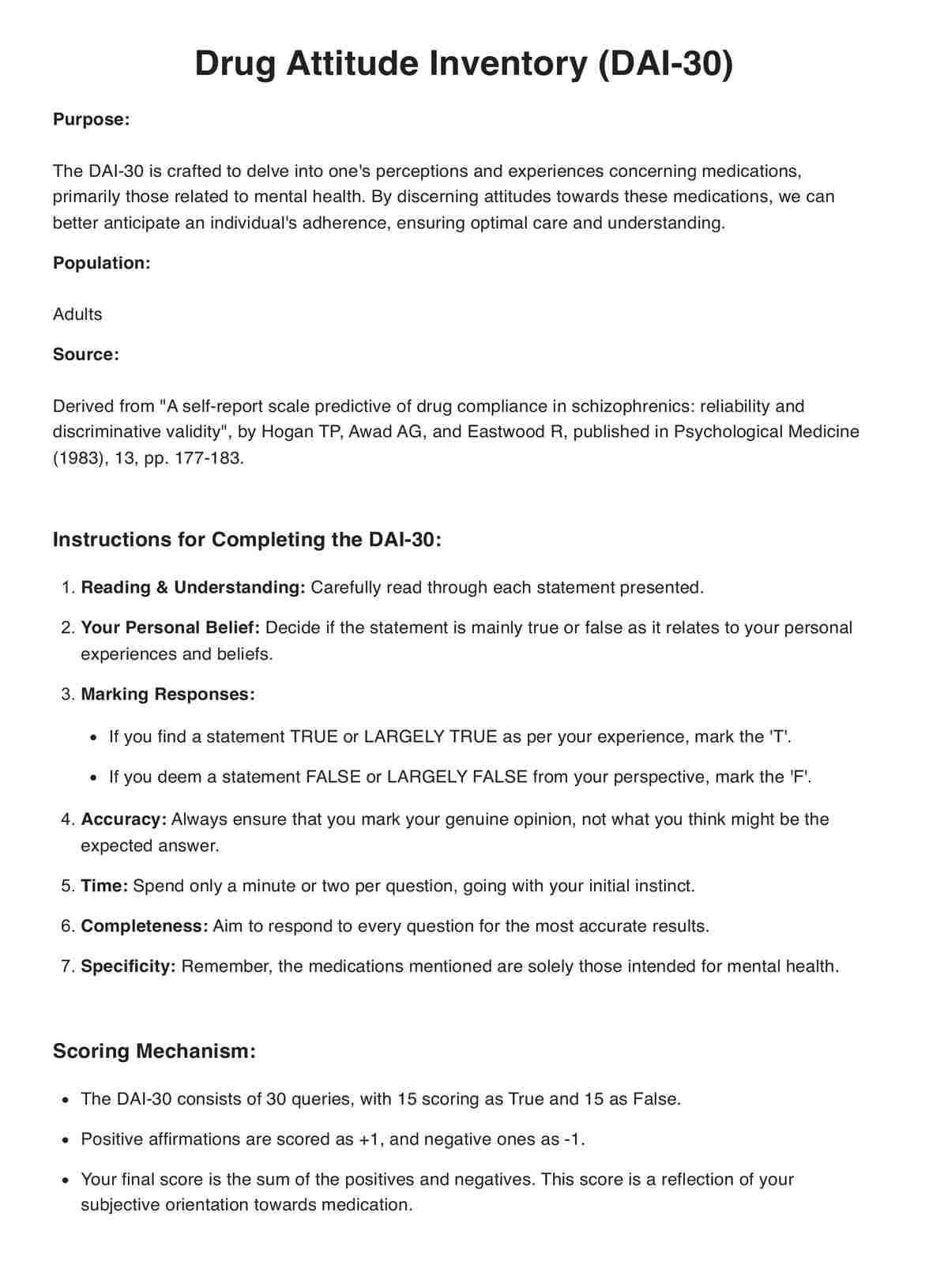Typically, it takes about 10-15 minutes, depending on the patient's speed.

Drug Attitude Inventory (DAI-30)
Use the Drug Attitude Inventory (DAI-30) to evaluate patient sentiments on medications, fostering improved understanding and compliance. Learn more with Carepatron.
Use Template
Drug Attitude Inventory (DAI-30) Template
Commonly asked questions
The scores reflect the patient's attitude, with higher scores indicating a more positive attitude toward their medications.
It's primarily used in clinical settings when assessing a patient's attitude toward their medication, especially in mental health contexts.
EHR and practice management software
Get started for free
*No credit card required
Free
$0/usd
Unlimited clients
Telehealth
1GB of storage
Client portal text
Automated billing and online payments











